
Kamakura Kencho-ji Temple in Spring
Tomoko KamishimaKencho-ji Temple was established as the first Zen-only training monastery in Japan starting in the late 1200s. In those days, there were many high level Buddhist priests

Kenchoji is Kamakura’s oldest Zen temple and is recognized as the top temple of the city’s Five Great Zen Temples. It was originally founded by regent Hojo Tokiyori in 1253 as a Zen training temple, and its first head priest was a Chinese Zen priest named Rankei Doryu.
One of Kenchoji’s defining characteristics is its expansive temple grounds. After the gates and main area, the complex extends deep into the wooded hills. The temple’s main buildings feature traditional Chinese architecture and are arranged in a line, which is characteristic of Chinese Zen Buddhist temples.
Kenchoji’s entrance is marked by Somon, a relatively small, yet beautiful, wooden gate that leads to the main gate, Sanmon. This massive wooden structure is meant to relieve you of all your attachments. Just past Sanmon and to the right is the temple’s bell tower, and to the left is a revered juniper tree. This 13-meter-tall tree is estimated to be about 760 years old and allegedly sprouted from seeds brought from China during the temple’s construction.
After the gates, the temple buildings stand in a line down the complex. First is Butsuden (Buddha Hall), which enshrines the principal statue of the temple, Jizo Bodhisattva. Directly behind Butsuden is Hatto, the largest wooden temple building in Eastern Japan. When Kenchoji was strictly a training temple, monks would gather in Hatto to listen to priests’ lectures. Inside Hatto is a statue of Senju Kannon and a stunning ceiling painting of a dragon among the clouds. Past Hatto is Hojo; this building was initially the head priest’s residence, but today is popular for its picturesque Zen garden.
Sanmon, the bell tower, Butsuden, and Hatto are all designated as National Important Cultural Properties.
After the main temple grounds, a path goes further into the forested hillside to Hansobo. This small shrine is dedicated to Hansobo Daigongen, the guardian deity of the temple, and has a small observation deck. A little further past the shrine is a second observation deck where you can observe Mount Fuji on clear days. From this point, there is a one-hour hiking trail that leads to Zuisenji Temple.
Kenchoji is about a 15-minute walk from Kita-Kamakura Station and approximately a 25-minute walk from Kamakura Station.

Kencho-ji Temple was established as the first Zen-only training monastery in Japan starting in the late 1200s. In those days, there were many high level Buddhist priests

It was Saturday afternoon and I was at Kencho-ji Temple in Kita-Kamakura. A few minutes before two o’clock a bell rang to signal that the Zen service was about to begin.
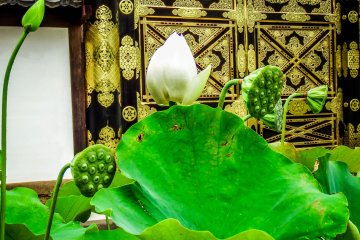
Experience an alternative side to one of Kamakura`s most popular attractions, Kencho-ji Temple
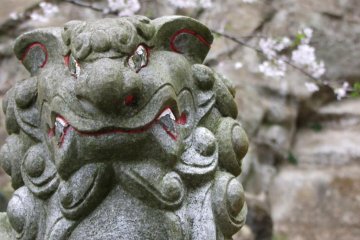
Hanzobo Shrine is much small and simpler than Kencho-ji, but can boast of a spectacular view, as well as some very beautiful statues. It is also a stop on a hiking course
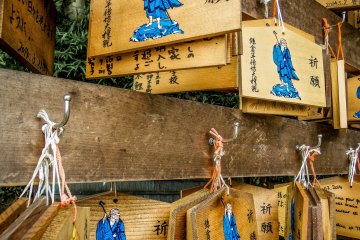
Located towards the back of Kamakura`s famous Kenchoji Temple is the peaceful hillside shrine of Hanzobo where you can meet many friendly Guardian Deities
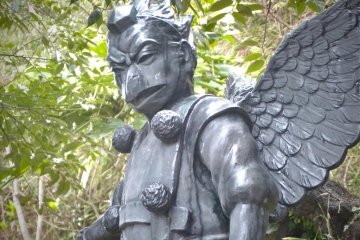
An avatar God protecting Kencho-ji Temple is called Hanzobo. People believe Hanzobo has protective powers against fire, and the ability to bring good luck

This autumn, Kamakura’s historic Kenchoji Temple will host ZEN NIGHT WALK KAMAKURA, a nighttime event blending Zen tradition with cutting-edge sound and light art.

Taisen-kaku is a 100-year-old inn just seconds away from Hase Kanon Temple. The service they provide will leave you with a memorable experience of your time in Kamakura.
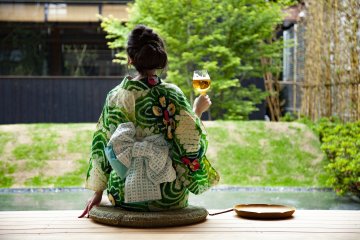
Kishi-ke is traditional, yet modern, Japanese-style inn that aims to connect guests with the present and help them achieve inner harmony through its peaceful design and cultural experiences.
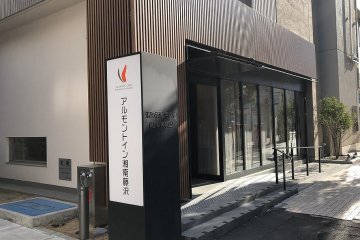
Fujisawa is located close to such popular tourist destinations as Enoshima and makura. A traveler can get everything necessary for a comfortable rest in a room.

At the creative French restaurant, Nature et Sens, diners are treated to an experience for the senses. Seasonal ingredients and Kamakura produce take centerstage in these fantastically beautiful dishes. Enjoy a glass of wine with your meal from their wide selection for the ultimate experience.
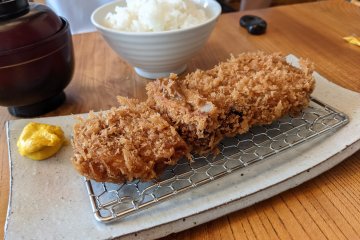
Taste Aratama's famous fried pork cutlet and fall in love with the fresh flavors. Tonkatsu isn't all that's on the menu. Be sure to try Aratama's other dishes like mozzarella menchi katsu and cream croquette.
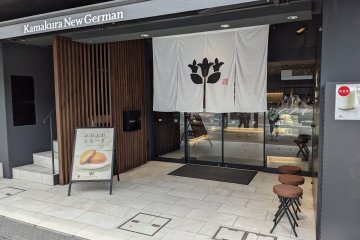
Discover the taste that Kamakura locals are in love with. New German's fluffy custard-filled sponge cakes are a dessert that is sure to impress. The caramel custard flavor is especially popular with visitors.

Fugenzan Meigetsu-in is a Rinzai Zen temple of the Kenchō-ji school in Kita-Kamakura, Kanagawa, Japan. Famous for its hydrangeas, it's also known as The Temple of Hydrangeas. The main object of worship is goddess Shō Kannon. Wikipedia

Tsurugaoka Hachimangu Shrine is arguably the most important shrine in Kamakura and is located roughly in the center of the city. The shrine was originally founded in 1063 by Minamoto Yoriyoshi, the head of Japan’s Minamoto Clan, and was later moved in 1180 to its current location by Minamoto Yoritomo, the founder and first shogun of the Kamakura shogunate. This relocation marked the start of samurai society and Kamakura as a spiritual and social center of Japan. This rich history and culture is still present in Kamakura today. The shrine is dedicated to Hachiman, the guardian deity of samurai and the Minamoto Clan. Hachiman is worshiped for good fortune in warfare. The long pathway to the shrine runs through Kamakura City and is marked by multiple red torii gates, showing an interconnectedness between spirituality and urban life. Upon entering the shrine grounds, you will see two ponds on either side of you. The pond on the left represents the Minamoto clan, and the one on the right represents the Taira Clan (Minamoto’s rival). The Taira pond purposefully has four islands in it, which symbolizes the bad blood between the clans as four can be pronounced the same as “death” in Japanese. Beside the Minamoto pond is a beautiful peony garden that is open in winter and spring when the flowers are in full bloom. Past the ponds you will come across the mai-den, which is located at the base of the stairs to the main hall. This vibrant red building is used as a stage for music and dance performances throughout the year’s festivities. Atop the wide staircase is the main hall. This traditionally designed structure features a red facade with gold-and-green detailing and is a commanding sight due to its massive size. Beside the main hall is a treasure hall that displays historical artifacts such as swords and masks. The grounds are also home to numerous smaller buildings and shrines, most notably Wakamiya and Maruyama Inari Shrine, which, along with the main hall, are nationally important cultural properties. Tsurugaoka Hachimangu hosts numerous events throughout the year. One of the shrine’s most popular festivals occurs from September 14th to 16th and features yabusame horseback archery. The shrine is also one of Japan’s most popular spots for hatsumode, which is the first shrine visit of the year.

Tokeiji, a Rinzai-sect temple of Zen Buddhism, is a branch temple of nearby Engakuji, which is a short 5-minute walk away. This important temple/nunnery was founded in 1285 by the wife of regent Hojo Tokimune as a sanctuary for women who were abused by their husbands. In a time when women could not legally divorce, Tokeiji offered them a three-year training program in return for an official divorce. The temple’s right to issue divorces was revoked in the early 1870s and its time as a nunnery ended in 1902. Up until 1902, men were strictly forbidden from entering the premises. Today, all visitors are welcome, and the temple is known for its beautiful flower gardens from summertime hydrangeas to wintertime plum blossoms. The relatively small complex features multiple structures, including an entrance gate, a bell tower, tea houses, a treasure house, and a main hall. The treasure house holds Buddhist artifacts, as well as lacquer work from past nuns; and the main hall enshrines a seated statue of Shaka Nyorai, the principal image of the temple. Join the temple for early morning zazen meditation, which is held every Sunday.